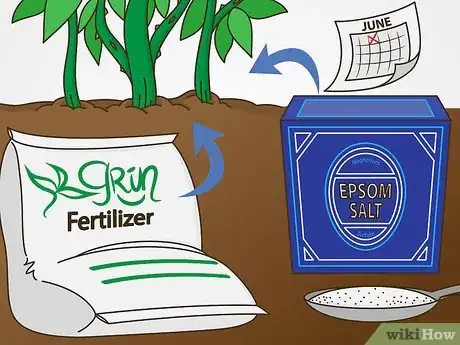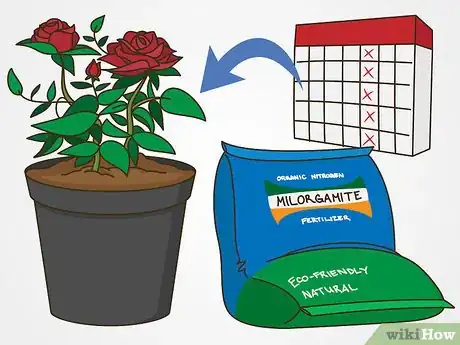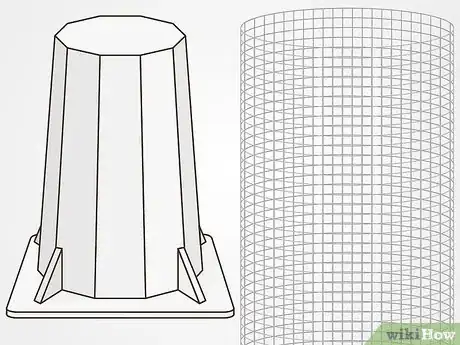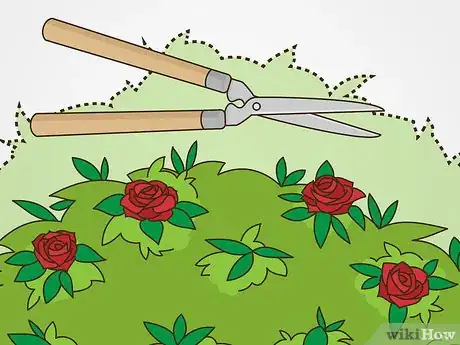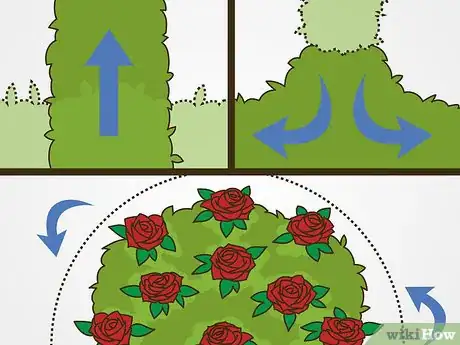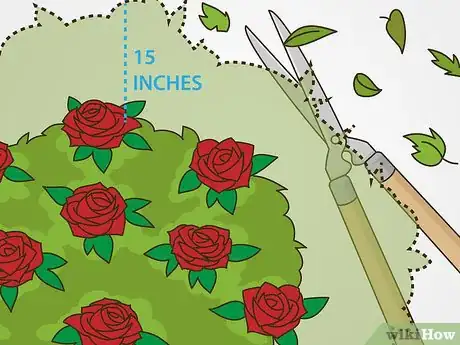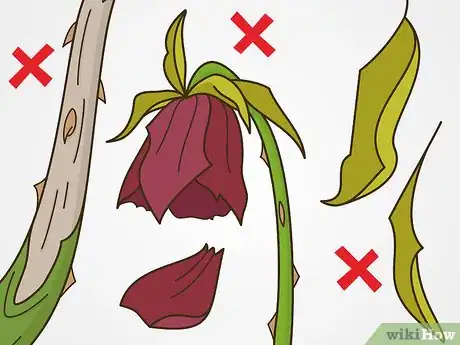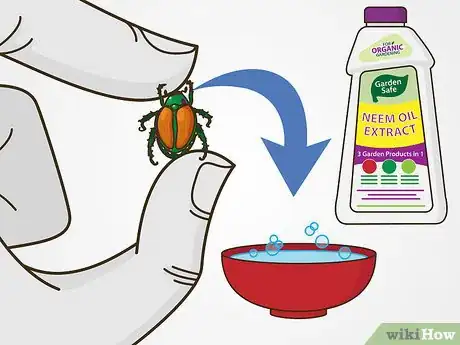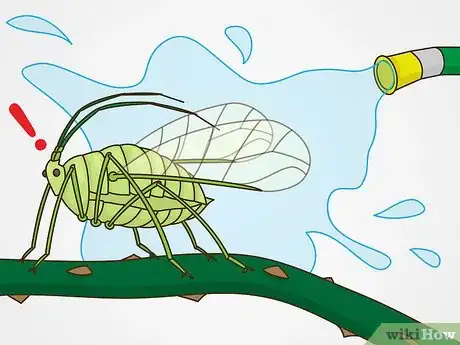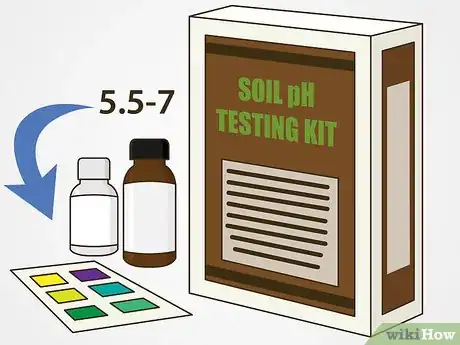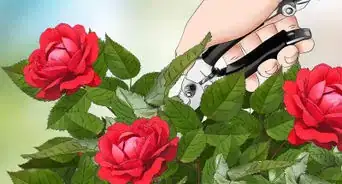This article was co-authored by Pilar Zuniga. Pilar Zuniga is a Floral Designer and the Owner of Gorgeous and Green, a floral design studio and Certified Green Business based in Oakland, California. Pilar has over ten years of experience in floral design. With a focus on being earth-friendly and supporting local growers, Gorgeous and Green has been featured in Energy Upgrade California, Molly My, Apartment Therapy, 100 Layer Cake, Design Sponge, and Trendy Bride. Her studio provides floral arrangements and gift basket, event and wedding design, and she teaches workshops on flower design and sustainability in her industry. Pilar received a BA in Anthropology from the University of California, Berkeley in 2001.
There are 9 references cited in this article, which can be found at the bottom of the page.
This article has been viewed 40,000 times.
There are over 100 species of roses, and thousands of cultivated varieties that dot gardens across the world. Roses aren't particularly difficult to maintain, but they do take time every year for pruning, cleaning, and maintenance.
Steps
Performing Basic Maintenance
-
1Water roses twice a week, soaking the entire root base. Rose roots run deeply, so make sure you get all of the ground around the roses nice and drenched. Roses tend to do best with up to 90 inches (229 cm) of water a year, but they don't like being constantly wet. A good drenching in the summer months 1-2 times a week should be perfect.
- Consider getting a soaker hose, which slowly lets water into the soil to drench down to the deepest roots.
- Make sure to water the roots and soil, not the leaves. Wet leaves and blooms promote bush-killing fungus.[1]
-
2Lay down mulch around your roses to lock in moisture and promote growth. Mulching your roses is highly recommended, as it will make them much easier to keep hydrated. It also chokes out many species of weeds. A 2-4 inch (5-10 cm) layer of garden shavings, or professional mulch, will be perfect.
- Leave a small space, about an inch (2.5 cm), between the mulch and the base of the roses.[2]
Advertisement -
3Fertilize your rose bush in the early spring. This should be done early spring when the buds are beginning to appear but leaves have yet to grow. A general-purpose garden fertilizer added once a month will do wonders. Always water the plants before adding fertilizer -- this plumps them up and prevents stress.
- Adding fresh compost to the roses can eliminate the need for fertilizer. Otherwise, consider adding it once a month if you feel your soil isn't very nutritious.
- Add a tablespoon of Epsom salts to the fertilizer in early June to promote new growth.
- You can over-fertilize, harming the plants. Follow the directions on the bottle for the best results.
-
4Fertilize potted roses once a week. If you have potted roses, you'll need to fertilize more often. Potted plants use up the nutrients in their container quickly. Add fertilizer to the pot weekly throughout the year, or add slow-release fertilizers once or twice a season.
-
5Prepare the plants for winter by freezing them. To winterize roses, keep them frozen rather than trying vainly to keep them warm throughout the long winter. To do so, stop fertilizing the plants 6 weeks or so before frosts come, but keep watering them. Add some fresh mulch, straw, pine needles, or compost as the frosts begin.
-
6Cover your rose bushes over the winter. Once the weather is permanently below freezing, loosely cover the bushes. Use chicken wire or a mesh cylinder to surround the plant, filling the enclosure with mulch, wood chips, or compost. You can also purchase "rose cones," which are covers made specifically for winterizing roses.
Pruning Your Roses Yearly
-
1Cut at a 45° angle when pruning. Make the cut just above an outside facing bud or branch. Take a look at a cane (stalk) from your rose bush, and find the little bud of a new branch. Using sharp shears, make a 45° cut above this bud or set of leaves, leaving the but completely on the stalk. This will promote growth to this new bud while chopping all the "dead weight" above it.
- Outside bud means one facing away from the center of the plant. This promotes outward and upward growth, which prevents "clogging" the center of the plant.
- Cutting at an angle, rather than straight across, allows water to run off the pruned branch rather than pooling on the cut and causing rot or fungal infections.
-
2Cut the flowers off once the petals are starting to fall off. This process is known as “deadheading.” After a flower has bloomed and is starting to wilt, clip it off with a sharp pair of pruning shears right above the leaves set closest to it, leaving just the leaves and stem. Flowers cost the bush a lot of energy, and deadheading allows it to save this energy to make new blooms. Stop deadheading in the fall, a few weeks before frosts are forecasted, to avoid letting new shoots freeze to death.[3]
- Deadheading usually starts in the early spring, with the first sets of blooms, but continues throughout the blooming season. It encourages repeat flowering.
- Your goal is to let the stem, or "cane," keep developing with more leaves and flowers. Don't cut it right where it meets the bush.
-
3Cut away dead growth in the fall after blooming is over. Dead canes are easy to spot -- they're all brown, thin, and haven't produced any buds or new leaves. Cut 2-3 inches below the dead spots to stop the spread. Spotted or mottled branches, which may be diseased, should go, too. You can trim these away throughout the season, but you definitely want to get rid of them in the beginning of winter.
- Any branch thinner than a pencil's diameter should be cut away right before the bad frosts -- they won't make it through anyway.
- Roses need good airflow to stay healthy, and too many leaves and branches crowding the center of the plant can lead to mold issues.[4]
-
4Prune your shrub to about half of its normal size in early spring. Simply cut the tops down as you like, rounding the roses into a nice, round bush.
- In the rose's first 1-2 years, keep this a little lighter. Only remove the top third or so of branches, as the plant is not yet established.[5]
- You can also trim rose bushes in the fall by pruning canes, branches, and foliage shortly after the first frost.
-
5Adjust your pruning to achieve the desired shape. Remember that roses tend to grow perpendicularly to where you prune. If you prune a lot off the top, the roses are going to grow sideways. If you prune on the edges, the plant will grow up. This is why a rounded rose bush is often the easiest way to prune roses, as all sides will grow more or less equally. But there are specific instances where this might not be desirable:
- Climbers should be tied straight up, with dead growth snipped away. Keep deadheading the tops and keep tying up new major canes to promote climbing.
- Groundcover roses shouldn't be snipped at the ends. Instead, follow the cane back to the source and cut it as low down as possible. Cutting the ends promotes upward, uneven shoots.
- Multiple roses planted together can be treated as one plant, and cut into a hedge or large single shrub.[6]
-
6Don't worry about over-pruning your shrub. Roses have the remarkable ability to sprout new buds out of even the oldest branches, meaning you can really hack away at it and still keep the plant alive, though a little bit slow for a year or two of blooming. This doesn't give you carte blanch to start snipping everywhere, but it should remind you to be confident and follow your gut as you cut. You won't “ruin” anything permanently if you prune your shrub a little too much.
-
7Prune once-bloom roses only after the flowers bloom. If your roses only bloom once a year, you cannot prune them using the same methods used for continuous-bloom roses. Once-bloom roses are usually old, mature plants that bloom around mid-July. Once the roses bloom and the petals start to fade and fall, prune the bush to your desired shape and cut away any dead growth.
- You can take off about 15 inches (38 cm) of growth every other year with once-bloom roses.[7]
Protecting Roses from Pests and Disease
-
1Only water the ground around the roses, not the leaves and blooms. Moisture on the leaves is an invitation for mold and fungus, which can severely damage your plants if you're not careful. When watering, aim low and soak the soil, avoiding the leaves. They will get wet sometimes, most noticeably when it rains, but this is okay. The point is not to keep the leaves completely dry, just not to get them wet if you don't need to.
-
2Remove dead plant material from around the base of the plants.[8] Dead leaves, blooms, and other plant debris will drop off the rose during the year and gather around the base. This material decomposes, which brings in all sorts of molds and fungus. To keep the plants safe, make sure to pick out dead foliage from along the garden bed.[9]
-
3Spray the plants with an anti-fungal if needed. If you're going to collect cut flowers from your roses, don't spray them down with chemicals. However, if the shrubs are purely decorative, a fungus spray is often a good idea to keep them clean and beautiful. You can also get "dormant sprays" that will work throughout the winter -- a good choice right before you pack the plants up for the cold.[10]
- Anti-fungals are especially important during cool, wet periods of weather. If you see black spots on the leaves or a light gray, powdery, fuzzy mold anywhere, spray an anti-fungal immediately.
- Good air flow and full sunlight are the most effective antifungals, so be wary when these conditions disappear due to the weather.
-
4Pick off Japanese beetles by hand and drop them in soapy water. The Japanese beetle is the scourge of many rose bushes, and they can eat away an entire plant in just a few days if left unchecked. As soon as you see one, examine and clean the whole plant before they attract more. Luckily, they are easy to spot and deal with, especially if you catch the infestation early. However, for serious cases where plucking by hand is impossible, an insecticide with carbaryl, permethrin, or neem in it should do the trick.
- Organic pesticides (with neem) and soaps will kill the beetles effectively. They will not, however, provide ongoing protection.
- Japanese beetles are shiny, iridescent green and copper beetles that are typically about 3/8 of an inch (9.5 mm) long.[11]
-
5Fight aphids with a strong stream of water from the hose. These little insects will slowly chow down on your beautiful roses, but they're too weak to handle the blast of a hose. Try to spray them down on a warm, sunny day, allowing the water to evaporate quickly. For difficult or recurring infestations, a standard garden insecticide should do the trick.
- The insects can be multiple colors, but most resemble lice -- small, round, and numerous.
- Flowers like marigolds, sunflowers, daisies, and dill attract insects that eat aphids, bringing in a natural defense system.[12]
-
6Plant a little lavender to keep away deer. Plant the lavender, or another deer-resistant plant, around the edges of your rose garden if you're worried about grazing. Marigolds are another good option, and some intrepid gardeners have found that human or dog hair in the garden area discourages deer. The scent of lavender, in general, discourages animals from browsing or grazing on your lovely roses.[13]
Preparing New Roses for Success
-
1Know your climate when picking a rose bush. Talk to your local garden center to find out what types of roses will survive and thrive in your climate. If you live up north, for example, you'll need to find a hearty, heavy rose that can survive winter. Southerners need a rose that can handle humidity and heat. Since there are so many rose varieties to choose from, it should not be too difficult to find one that matches your needs. However, don't just go in believing any rose can survive anywhere -- they are all very different plants.
-
2Test your soil pH and adjust if needed. Ensure the roses are planted in neutral pH soil with a simple acidity test. Grab a soil test from your local garden store and use it to check out your garden's dirt. It should be at a pH range between 5.5-7.0 for the best rose growth.
- If you soil is too acidic (low pH), you can add finely grown limestone to the soil and test again.[14]
- If the soil is too alkaline, or basic (high pH), you can add ground sulfur to the soil.
-
3Plant roses in well-drained, fertile soil. Don't plant roses in sandy, loose soil or firm, hard-packed dirt. Roses need a deep, lightly packed area of soil to really thrive. The dirt shouldn't keep its moisture for a long time, as this can drown the roots. Make sure your garden can drain excess water out.
- Aim for higher ground in your garden, where there is plenty of room for draining water.
- If the soil is relatively easy to dig into, without feeling like sand, it is likely fine for roses.[15]
-
4Keep the roses where they can receive at least 6 hours of sun daily. Roses are full-sun plants, so put them somewhere they will get ample sunlight throughout the day, which will lead to bigger, better blooms.[16]
- In general, south facing areas provide the most sunlight.
-
5Plant the roses with a layer of manure or rose-specific fertilizer. This will help them get off on a good foot, providing necessary nutrients as the plant establishes itself in the soil. You can find many fertilizers specially formulated for roses, or you can go the old fashioned way and use manure.
- Want to avoid fertilizer and manure? Consider planting your roses with a small square of gypsum and an iron nail -- providing two nutrients needed for growth.[17]
Community Q&A
Did you know you can get expert answers for this article?
Unlock expert answers by supporting wikiHow
-
QuestionHow do you make cut roses last longer?
 Pilar ZunigaPilar Zuniga is a Floral Designer and the Owner of Gorgeous and Green, a floral design studio and Certified Green Business based in Oakland, California. Pilar has over ten years of experience in floral design. With a focus on being earth-friendly and supporting local growers, Gorgeous and Green has been featured in Energy Upgrade California, Molly My, Apartment Therapy, 100 Layer Cake, Design Sponge, and Trendy Bride. Her studio provides floral arrangements and gift basket, event and wedding design, and she teaches workshops on flower design and sustainability in her industry. Pilar received a BA in Anthropology from the University of California, Berkeley in 2001.
Pilar ZunigaPilar Zuniga is a Floral Designer and the Owner of Gorgeous and Green, a floral design studio and Certified Green Business based in Oakland, California. Pilar has over ten years of experience in floral design. With a focus on being earth-friendly and supporting local growers, Gorgeous and Green has been featured in Energy Upgrade California, Molly My, Apartment Therapy, 100 Layer Cake, Design Sponge, and Trendy Bride. Her studio provides floral arrangements and gift basket, event and wedding design, and she teaches workshops on flower design and sustainability in her industry. Pilar received a BA in Anthropology from the University of California, Berkeley in 2001.
Floral Designer & Owner, Gorgeous and Green When displaying the rose, using fresh water and a fresh vase is imperative. Make sure to wash out the vase with soap and water and let it dry before adding the roses. If you notice that one or two roses are starting to weep a little bit, you can try to re-cut them, and you can actually cut their stems under flowing water so that no air gets pulled into the stem itself.
When displaying the rose, using fresh water and a fresh vase is imperative. Make sure to wash out the vase with soap and water and let it dry before adding the roses. If you notice that one or two roses are starting to weep a little bit, you can try to re-cut them, and you can actually cut their stems under flowing water so that no air gets pulled into the stem itself. -
QuestionWhy won't the roses I bought last?
 Pilar ZunigaPilar Zuniga is a Floral Designer and the Owner of Gorgeous and Green, a floral design studio and Certified Green Business based in Oakland, California. Pilar has over ten years of experience in floral design. With a focus on being earth-friendly and supporting local growers, Gorgeous and Green has been featured in Energy Upgrade California, Molly My, Apartment Therapy, 100 Layer Cake, Design Sponge, and Trendy Bride. Her studio provides floral arrangements and gift basket, event and wedding design, and she teaches workshops on flower design and sustainability in her industry. Pilar received a BA in Anthropology from the University of California, Berkeley in 2001.
Pilar ZunigaPilar Zuniga is a Floral Designer and the Owner of Gorgeous and Green, a floral design studio and Certified Green Business based in Oakland, California. Pilar has over ten years of experience in floral design. With a focus on being earth-friendly and supporting local growers, Gorgeous and Green has been featured in Energy Upgrade California, Molly My, Apartment Therapy, 100 Layer Cake, Design Sponge, and Trendy Bride. Her studio provides floral arrangements and gift basket, event and wedding design, and she teaches workshops on flower design and sustainability in her industry. Pilar received a BA in Anthropology from the University of California, Berkeley in 2001.
Floral Designer & Owner, Gorgeous and Green
-
QuestionWhat fertilizers should I use for rose plants?
 Lauren KurtzLauren Kurtz is a Naturalist and Horticultural Specialist. Lauren has worked for Aurora, Colorado managing the Water-Wise Garden at Aurora Municipal Center for the Water Conservation Department. She earned a BA in Environmental and Sustainability Studies from Western Michigan University in 2014.
Lauren KurtzLauren Kurtz is a Naturalist and Horticultural Specialist. Lauren has worked for Aurora, Colorado managing the Water-Wise Garden at Aurora Municipal Center for the Water Conservation Department. She earned a BA in Environmental and Sustainability Studies from Western Michigan University in 2014.
Professional Gardener
Warnings
- Do not plant your rose bush in the lowest, wettest area of the yard, as they require well-drained soil.⧼thumbs_response⧽
References
- ↑ http://www.almanac.com/plant/roses
- ↑ http://www.bhg.com/gardening/flowers/roses/basic-rose-care/#page=0
- ↑ http://www.almanac.com/plant/roses
- ↑ http://www.heirloomroses.com/info/care/how-to/pruning/
- ↑ https://www.davidaustinroses.com/american/Advanced.asp?PageId=1920
- ↑ http://www.heirloomroses.com/info/care/how-to/pruning/
- ↑ http://www.heirloomroses.com/info/care/how-to/pruning/
- ↑ Pilar Zuniga. Floral Designer & Owner, Gorgeous and Green. Expert Interview. 12 March 2020.
- ↑ http://www.bhg.com/gardening/flowers/roses/basic-rose-care/#page=0
- ↑ http://www.almanac.com/plant/roses
- ↑ https://www.extension.umn.edu/garden/insects/find/japanese-beetles/
- ↑ http://www.bhg.com/gardening/pests/insects-diseases-weeds/stop-aphids/#page=0
- ↑ http://www.almanac.com/plant/roses
- ↑ http://www.almanac.com/plant/roses
- ↑ http://www.gardeningknowhow.com/ornamental/flowers/roses/starting-a-rose-garden.htm
- ↑ http://www.bhg.com/gardening/flowers/roses/basic-rose-care/#page=0
- ↑ http://www.almanac.com/plant/roses
About This Article
To maintain roses, water your plant 1-2 times a week, soaking the entire root base. However, avoid getting the leaves and blooms wet, since that can promote the growth of fungus that could kill the rose bush. Early each spring, fertilize the rose bush with a general-purpose garden fertilizer, then add a 2- to 4-inch layer of mulch around the rose bush to help retain moisture and discourage weeds. During cold weather, winterize your bushes by freezing or covering them. Keep reading for tips from our horticulture reviewer on pruning your roses!


